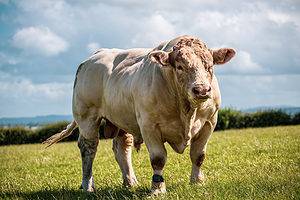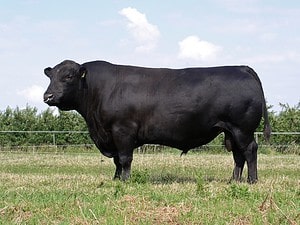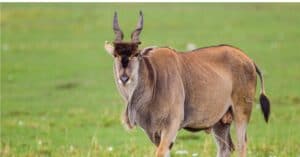Cows, those gentle giants of the animal kingdom, have been an integral part of human history for millennia. Their domestication revolutionized agriculture and shaped the course of human civilization. But have you ever wondered where these remarkable creatures originated and how they evolved over time? In this exploration, we will embark on a captivating journey through the annals of history to uncover the origin of cows, their diverse species, and their significant roles in shaping our world.
The Origins of Cows: A Prehistoric Tale
To trace the origins of cows, we must travel back in time to prehistoric landscapes, around 10,000 years ago, to the region known as the Fertile Crescent. This crescent-shaped area extends from the eastern Mediterranean coast, includes parts of modern-day Turkey, Syria, Lebanon, Israel, Jordan, and Iraq, and reaches the Tigris and Euphrates rivers in Iraq.
The term “Fertile Crescent,” coined by archaeologists and historians, describes this region of exceptionally fertile soil and favorable climatic conditions for early agriculture. Often referred to as the “cradle of civilization,” it was one of the world’s earliest centers of agriculture, urbanization, and the development of complex societies. Moreover, it was here that the ancestors of domesticated cattle, collectively known as aurochs (Bos primigenius), roamed.
The aurochs were formidable creatures, imposing animals that once roamed across Europe, Asia, and North Africa. What’s more, these massive bovines stood about 5.5 to 6.6 feet tall at the shoulder, with robust, muscular bodies, dark brown to black coats, and distinctive long, curved horns that could reach over 3.3 feet in length. Aurochs exhibited social behavior, forming herds with a hierarchical structure led by dominant individuals. Finally, they were herbivorous grazers, adapting to various environments, including forests, grasslands, and wetlands.
Unfortunately, the last population of wild aurochs, residing in Poland’s Jaktorów Forest, became extinct in the 1600s, likely due to hunting and habitat loss. Nevertheless, their domestication by early humans marked a pivotal moment in the history of agriculture and civilization, as it laid the foundation for modern cattle breeds and our food production systems today.
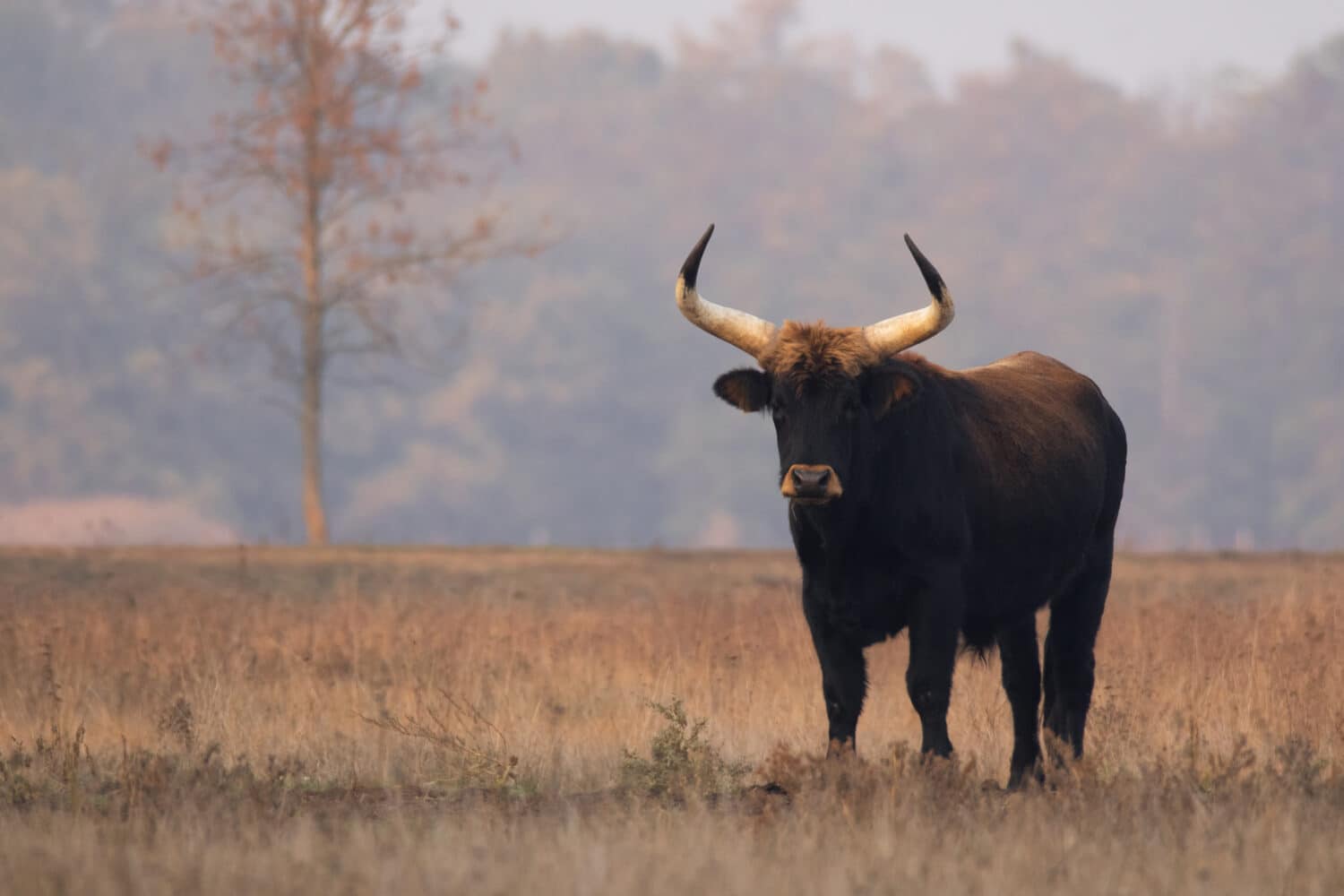
Heck cattle (
Bos primigenius f. taurus) derived from the extinct aurochs (
Bos primigenius).
©Simon Vasut/Shutterstock.com
Domestication: A Pioneering Achievement
The domestication of aurochs was a monumental achievement in human history. It marked the transition from nomadic hunting and gathering societies to settled agricultural communities. The exact timeline and methods of aurochs domestication remain topics of research and debate among scientists. However, it is widely believed that this occurred around 8,000 to 10,000 years ago.
Early humans realized that the aurochs’ size, strength, and adaptability could be a great benefit. By selectively breeding these animals, our ancestors began the transformation that would give rise to the diverse cattle breeds we have today.
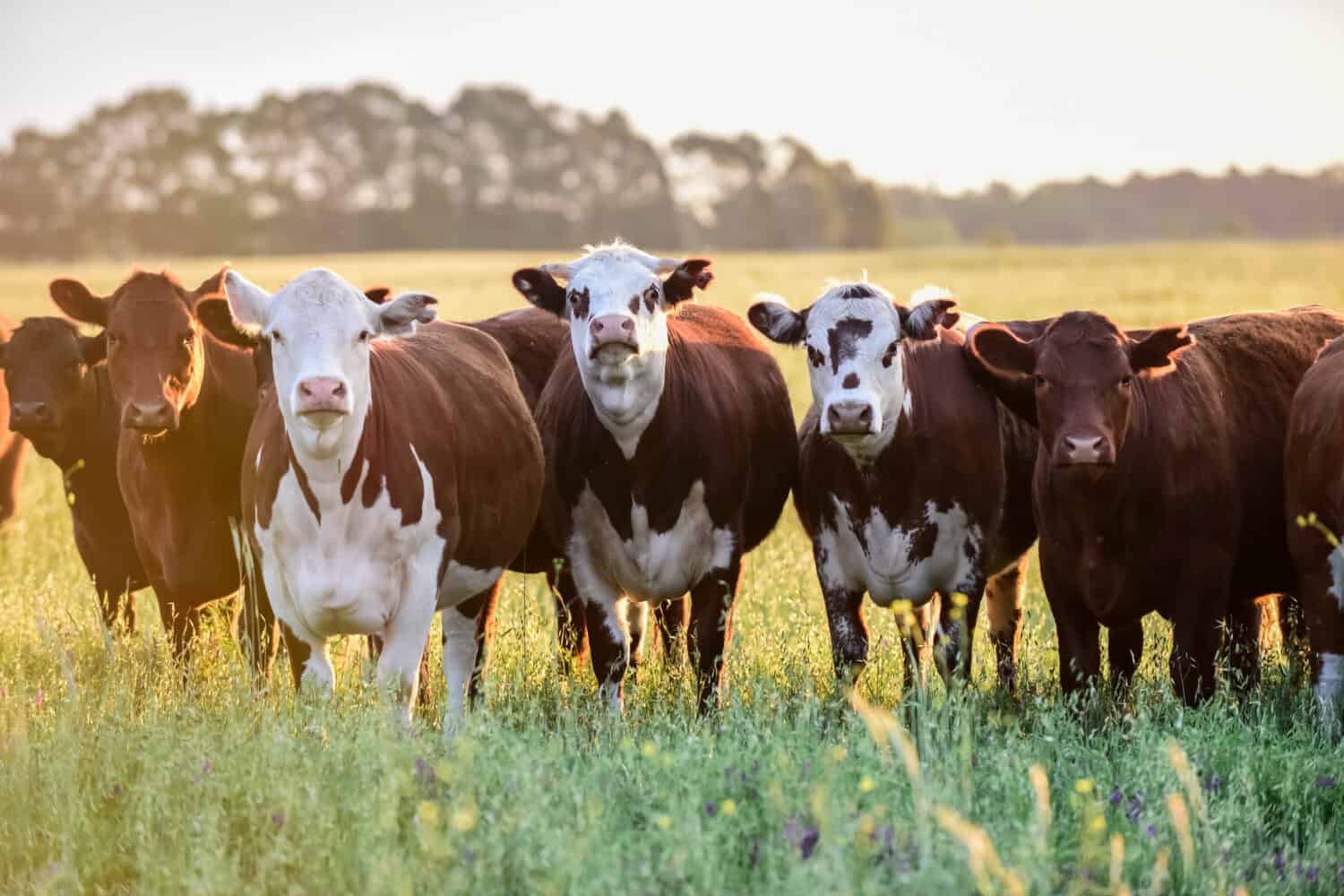
By selectively breeding aurochs, our ancestors began the transformation that would give rise to the diverse cattle breeds we have today.
©Foto 4440/Shutterstock.com
From Aurochs to Modern Cattle: The Evolutionary Journey
The transition from aurochs to modern cattle was a slow and complex process that unfolded over centuries. As humans continued to breed these animals for various traits selectively, several distinct cattle breeds emerged, each adapted to the specific needs of their human caretakers.
One of the most significant developments in cattle evolution was the emergence of the Bos taurus subspecies. This includes many of the cattle breeds familiar to us today, such as Holsteins, Jerseys, and Herefords. These animals exhibited traits that made them well-suited for agriculture, including docility, high milk production, and the ability to thrive in a variety of environments.
Diverse Species, Global Impact
Cattle domestication didn’t remain confined to one region. As human societies expanded, so did their cattle. The diverse species of domesticated cattle began to spread across the globe. Naturally, this development played a crucial role in shaping the agricultural and cultural practices of various regions.
In Europe, cattle became integral to the development of agrarian societies. Cows produced milk and meat, and labored as draft animals, aiding in plowing fields and transport. On the other hand, in India, the sacred status of cows led to the development of revered cattle breeds like the Brahman and the sacred Zebu. In Africa, cattle were treasured by various tribes and played a central role in traditional ceremonies and livelihoods. Finally, in the Americas, cattle brought by European settlers had a profound impact on the diets and lifestyles of indigenous populations.

In India, the sacred status of cows led to the development of revered cattle breeds like the Brahman.
©Aleksandar Todorovic/Shutterstock.com
Modern Cattle Breeds: A Tapestry of Diversity
Today, the world is home to an astonishing variety of cattle breeds, each with its own unique characteristics and adaptations. Some are famous for their milk production, such as the Holstein and Jersey breeds. Others, like the Angus and Hereford, are prized for their high-quality beef.
Moreover, cattle breeds also vary in size, coloration, and climate adaptability. This reflects the diverse environments they have grown to thrive in. The Ankole-Watusi, known for its enormous, distinctive horns, hails from Africa’s Great Lakes region. On the other hand, the Highland cow, with its shaggy coat, adapts well to Scotland’s harsh, cold climates.
The Cultural Significance of Cows
Beyond their economic and agricultural roles, cows have held cultural and spiritual significance for societies across the world. In Hinduism, the cow is considered sacred and revered as a symbol of wealth, strength, and abundance. Moreover, in parts of Africa, cattle are seen as a source of pride and a symbol of prosperity.
Furthermore, cows have also made their way into folklore and mythology. In Greek mythology, the god Zeus was said to have been raised by a goat and a cow. This highlights the nurturing and life-giving qualities associated with these animals.

A sacred Hindu cow statue that reflects the cow’s status as a symbol of wealth, strength, and abundance.
©SimonHS/Shutterstock.com
Cows: A Remarkable Legacy
Cows, in their various forms, have left an indelible mark on human history. From the aurochs of ancient times to the diverse cattle breeds of today, their evolution and domestication have played a pivotal role in the development of human societies, agriculture, and cultures worldwide.
All in all, as we admire these gentle creatures in our modern world, it is important to reflect on the journey they have taken alongside us and the enduring legacy of cooperation and mutual benefit that defines our relationship with them.
The photo featured at the top of this post is © Simon Vasut/Shutterstock.com
Thank you for reading! Have some feedback for us? Contact the AZ Animals editorial team.



